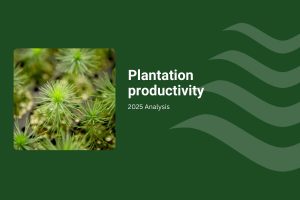Interest rates, one of the primary tools in the monetary policy arsenal of the Reserve Bank of Australia, appear to be having a more limited impact than was once the case. As the nation’s economic commentators have been discussing, the central bank’s ability to ‘pull on the levers’ to change the direction of the economy appears to be having less impact than was once the case.
Reserve Bank of Australia Deputy Governor, Philip Lowe, was very frank about the limits of Australia’s monetary policy in March, in a highly publicised speech. He started by discussing the global situation, talking about the various rounds of ‘quantitative easing’ (printing money) and interest rate cuts that had been conducted by major economies, including our own. Here is what he said:
In many ways, the current global monetary environment is quite extraordinary. There has been unprecedented money creation by the world’s major central banks. … Lending rates for many private sector borrowers are the lowest ever. And some banks in Europe are now charging customers to accept deposits.
But, despite the incentives to spend, global recovery from the long-running crises of the decade has been very slow, as the RBA’s Deputy Governor put it:
In earlier eras, one could have predicted with some confidence that this type of monetary stimulus would have created a boom in economic activity and subsequently a substantial lift in inflation. (However) … the effects of monetary policy have been somewhat less, or slower to materialise, than in earlier times. (This is because) … economic activity and inflation (are) responding in only a relatively muted way to the monetary stimulus, with central banks having to do more to achieve their mandated goals.
Philip Lowe then seeks, appropriately, to explain why economies have not responded to the flood of cheap funds and debt. For the RBA, the major reason is pre-existing levels of debt. As Mr Lowe said:
Perhaps the single most important factor explaining this is the very high levels of debt that exist in many advanced economies.
One of the channels through which monetary policy works is by encouraging people to bring forward future spending to today. This requires them to borrow or to reduce their rate of savings. In the years leading up to the crisis, a reduction in interest rates could be reliably predicted to encourage such a response. Credit was easily accessible, economic volatility in many economies was low and people were prepared to borrow.
So in the past, lower interest rates would result in expenditure and investment. However:
In today’s world, things look quite different. After a steady increase in debt levels over the previous two decades, many people do not want more debt. They do not want to – or they do not have the confidence to – bring forward future spending to today. As a result, household indebtedness in many countries has declined even though interest rates are the lowest on record.
Turning to Australia, Philip Lowe describes the similar situation applicable since the early 2000s:
Australian households increased their borrowing over the decade or so to the mid 2000s as they adjusted to lower nominal interest rates and greater access to finance. During this period, the saving rate fell and indebtedness increased.
However, Australian households have responded to lower interest rates in some unexpected ways, with a profound impact on housing investment in particular:
But this adjustment is now complete. Over recent years many more households have focused on paying down their debts, rather than borrowing more, and the saving rate has increased. In the earlier period, the level of interest rates that we have today would have caused a large boom in borrowing, but this has not occurred.
One area where this change in behaviour is apparent is in the household sector’s injection of equity into the housing stock.
In addition, as Australia’s housing market has grown strongly, with rising values, household behavior has changed, as Mr Lowe explains:
In the early 2000s when property prices were increasing strongly, many households used their newfound wealth to withdraw equity and enjoy higher levels of consumption. Again, this is not occurring on this occasion and this is changing the way that monetary policy affects the economy.
While it is not possible to be definitive, there are reasonable grounds to believe that the behaviour of both borrowers and savers might have changed a little.
And here is the RBA’s analysis of that behavior and of those who rely on investments for their income:
Many borrowers have responded to the lower interest rates of recent years by paying off their loan a little faster, rather than increasing their spending.
Conversely, it seems likely that those relying on interest income have reduced their spending by more than would previously have been the case. Certainly, the many letters we have been receiving at the Bank recently would suggest this.
In the typically dry language of a central bank economist, Mr Lowe concluded his comments by describing households as preferring to save money rather than invest. He put it this way:
Finally, stepping back from the short term, the low interest rates we are seeing globally and in Australia are a direct consequence of an elevated appetite for saving and a muted appetite for real investment in many economies.
Mr Lowe could perhaps have said simply that all around the world, the GFC and its affects caused people to be more conservative with their borrowings and expenditure. However, regardless of how he said it, the nation was listening as the RBA’s second most senior officer described the national psyche.
The full text of the speech by Philip Lowe, can be found at: http://www.rba.gov.au/speeches/2015/sp-dg-2015-03-05.html.



